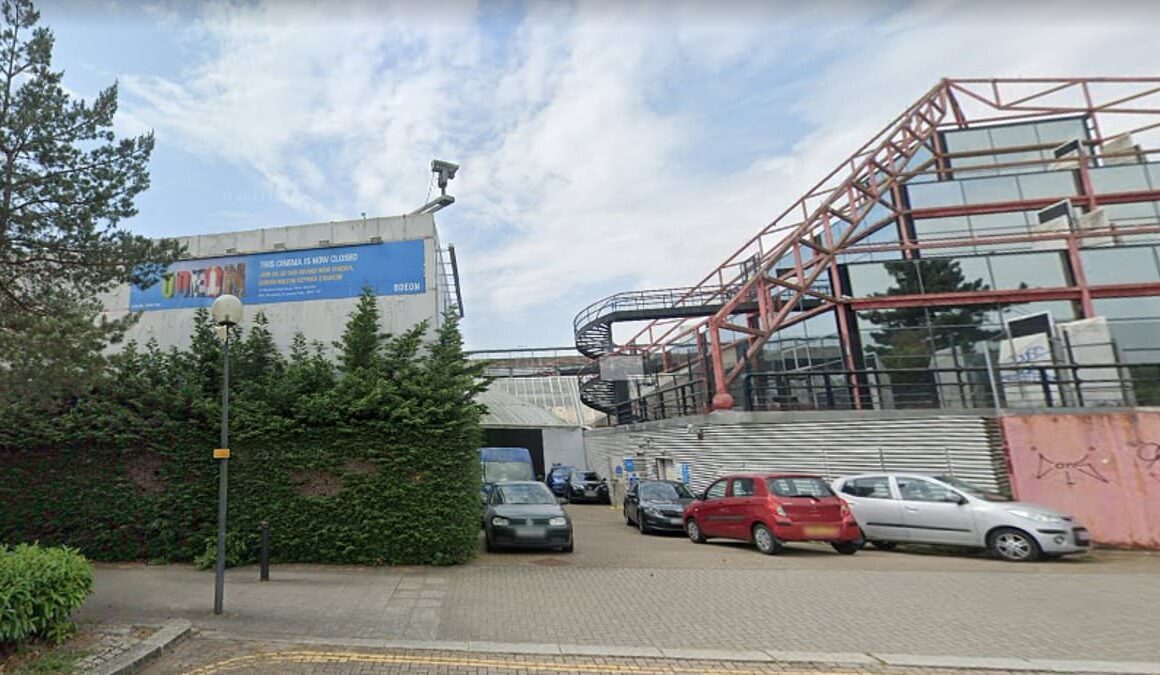QUESTION: Where is the largest cinema and largest cinema screen in the world?
The cinema multiplex was pioneered in the 1980s, with the first multiplex in the UK the ten screen The Point in Milton Keynes opening in 1985.
A cinema with at least 16 screens became a megaplex, and the 25-screen Kinepolis Madrid in Spain is currently the largest in the world.
It has a seating capacity of 9,200, including one 996-seat auditorium. Other venues, such as the cinema in Ontario Mills, California, have 30 screens but smaller capacity.
The biggest single screen in the world is in the Traumpalast (Dream Palace) in the Leonberg IMAX in Germany. It weighs more than 500lb and is wider than a Boeing 737 airliner, at nearly 70ft high and around 125ft across.
Not technically a cinema screen but remarkable nevertheless is the enormous LED display in the Sphere in Las Vegas. Its 160,000 sq ft screen, the size of four football fields, wraps itself over and around the audience, and the venue has understandably become a tourist hotspot.

The 25-screen Kinepolis Madrid in Spain is currently the largest cinema in the world

The first multiplex in the UK was the ten screen The Point in Milton Keynes opening in 1985. It later closed down.
Ian MacDonald, Billericay, Essex
QUESTION: Has a famous work of art ever been mistakenly hung upside down?
This can be a problem with modern art. The most famous example was New York City I, a painting by the Dutch abstract artist Piet Mondrian that was displayed upside down for decades.
New York City I was created in 1942 and formed by a grid of red, blue and yellow lines. When it was first exhibited at the Museum of Modern Art (MoMA) in New York in 1945, it was hung incorrectly.
The mistake was perpetuated in various exhibitions over the years; it has been hanging this way in the state collection of North Rhine-Westphalia in Dusseldorf since 1980.
The error was discovered only in 2022, when curator Susanne Meyer- Buser saw a photograph of it from Mondrian’s studio. She realised the ‘thickening of the grid should be at the top, like a dark sky’. Correcting the mistake, however, would risk damaging the artwork due to its fragile condition, so it remains hanging in its mistaken orientation.
Another example was Salvador Dali’s Four Fishermen’s Wives Of Cadaques (1928), an almost abstract work by the surrealist painter. When it was exhibited in a 1994 ‘early years’ show at London’s Hayward Gallery, a journalist from The Art Newspaper noticed it was hanging upside down. How did they know? It was a phallus that alerted them: a young Dali would hardly have painted it drooping downwards.
In 1986, the University of Minnesota Art Museum embarrassingly admitted that one of its most treasured paintings, Georgia O’Keeffe’s 1928 precisionist work Oriental Poppies, had been hanging in the gallery vertically instead of horizontally, as intended, for nearly 30 years.

New York City I was created in 1942 and formed by a grid of red, blue and yellow lines
Some works are displayed upside down intentionally, to create optical illusions, as in works by the likes of Giuseppe Arcimboldo and Rex Whistler.
For instance, Arcimboldo’s The Cook features a plate of food one way up and a cook the other.
This can also be political. For example, the portrait of King Philip V of Spain on display at the Almodi Museum in Xativa, Valencia, is deliberately hung upside down as an act of vengeance. During the War of Spanish Succession (1701-1714), the king laid siege to the town and burned it nearly to the ground.
Olivia Cohen, Luton, Beds
QUESTION: Was there a real Grace Brothers department store?
There was but it bears no relation to the one in the sitcom Are You Being Served? Grace Brothers was an Australian department store founded by Albert Edward Grace and Joseph Neal Grace in 1885 in Sydney, New South Wales.
By 1906, Grace Brothers had moved to its most famous purpose built premises on Broadway in Sydney, becoming one of the city’s main shopping destinations. It was renowned for its comprehensive range of merchandise, including clothing, furniture and homewares.

The front of the Grace Bros store at Burwood in Sydney’s inner-west during the 1980s
Through the 20th century, Grace Brothers expanded its presence, opening multiple suburban branches across New South Wales.
In the 1980s it was acquired by Myer, a big Australian retailer. This acquisition marked the beginning of a gradual integration process. By 2004, the Grace Brothers brand had been phased out, with all stores rebranded as Myer.
In the early 1950s, scriptwriter Jeremy Lloyd was a junior assistant at Simpsons of Piccadilly; he drew on his experiences for Are You Being Served? When it opened in 1936, Simpsons was the largest menswear store in Britain. The building now serves as Waterstones’ flagship store.
Ken Old, Dorking, Surrey








